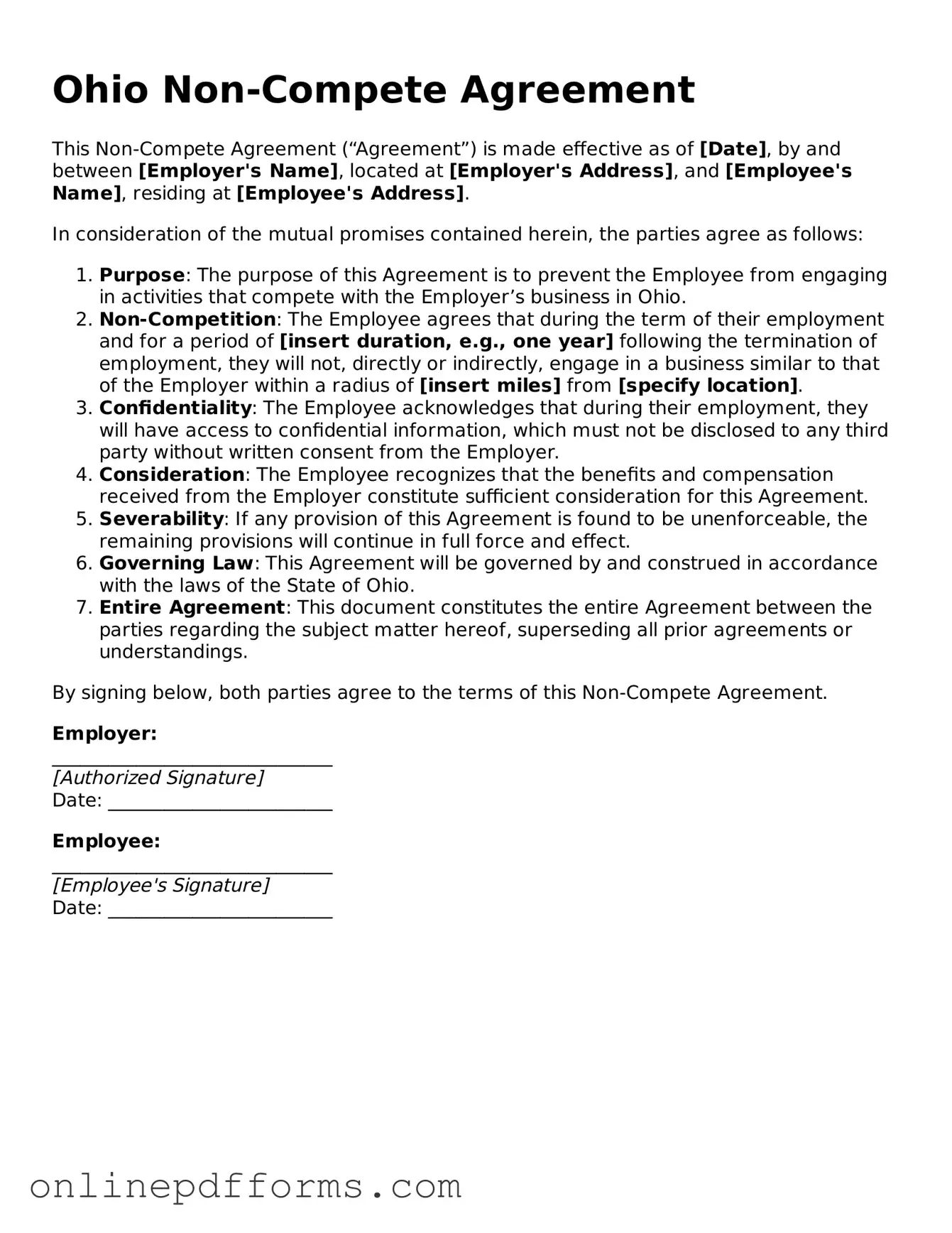The Ohio Non-compete Agreement is similar to the Employment Contract. An Employment Contract outlines the terms of the relationship between an employer and an employee. Like a non-compete agreement, it establishes expectations regarding job duties, compensation, and confidentiality. Both documents aim to protect the interests of the employer while providing a clear framework for the employee's responsibilities.
Another similar document is the Confidentiality Agreement, also known as a Non-Disclosure Agreement (NDA). This document prevents employees from sharing sensitive information with outside parties. Like a non-compete agreement, it safeguards a company's proprietary information and trade secrets, ensuring that employees understand the importance of confidentiality in their role.
The Non-solicitation Agreement shares similarities with the Non-compete Agreement. This document restricts an employee from soliciting clients or employees after leaving the company. Both agreements aim to protect business interests by limiting the ability of former employees to take clients or colleagues to a competing business, thereby preserving the company's market position.
The Proprietary Information Agreement is another document that aligns with the Non-compete Agreement. This agreement specifically addresses the handling of proprietary information and trade secrets. It serves to protect a company’s intellectual property, similar to how a non-compete agreement seeks to prevent employees from using knowledge gained during employment to benefit competitors.
The Independent Contractor Agreement is also relevant. While it primarily outlines the relationship between a contractor and a company, it can include non-compete clauses. These clauses restrict contractors from working with competitors or using the company's trade secrets, similar to the provisions found in a Non-compete Agreement.
The Partnership Agreement can be compared to the Non-compete Agreement in that it outlines the terms of a partnership, including any restrictions on competition. Partners may agree not to compete with each other during and after the partnership, which mirrors the intent of a non-compete agreement in protecting business interests.
The Licensing Agreement is another document that may contain non-compete elements. This agreement allows one party to use another's intellectual property under certain conditions. It can include clauses that prevent the licensee from competing with the licensor, similar to the restrictions found in a Non-compete Agreement.
The Wisconsin RV Bill of Sale form is a vital document that facilitates the legal sale and transfer of recreational vehicles within the state. Not only does it provide proof of purchase, but it also contains essential transaction details that ensure the sale is recognized legally. For those seeking similar forms elsewhere, resources like Auto Bill of Sale Forms can be invaluable in guiding buyers and sellers through the necessary paperwork for a smooth transaction.
The Shareholder Agreement often includes provisions that prevent shareholders from competing with the company. This document outlines the rights and responsibilities of shareholders and may incorporate non-compete clauses to protect the business from competition by its own owners, reflecting the same goals as a Non-compete Agreement.
Lastly, the Franchise Agreement is similar as it typically contains non-compete provisions. This agreement governs the relationship between a franchisor and franchisee. It often restricts the franchisee from operating a competing business within a certain area, aligning with the objectives of a Non-compete Agreement to maintain brand integrity and market share.
